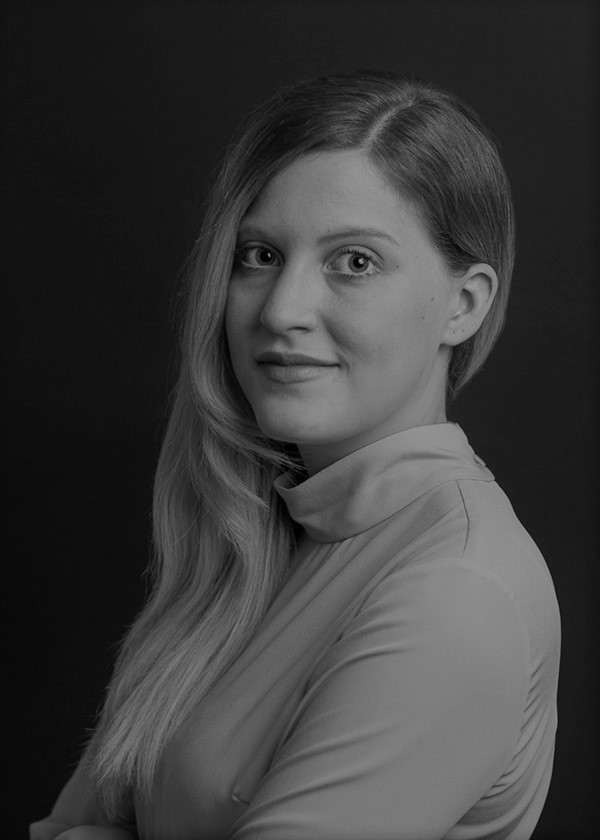Isabel Schöllhorn
PhD student, Optometry
Publications
2025
Lasauskaite, R; Wüst, L. N.; Schöllhorn, I.; Richter, M; Cajochen, C.
In: LEUKOS, 2025.
@article{nokey,
title = {Non-image-forming effects of daytime electric light exposure in humans: A systematic review and meta-analyses of physiological, cognitive, and subjective outcomes},
author = {R Lasauskaite and L. N. Wüst and I. Schöllhorn and M Richter and C. Cajochen},
doi = {10.1080/15502724.2025.2493669},
year = {2025},
date = {2025-04-14},
journal = {LEUKOS},
keywords = {},
pubstate = {published},
tppubtype = {article}
}
2024
Stefani, O.; Schöllhorn, I.; Münch, M.
Towards an evidence-based integrative lighting score: a proposed multi-level approach Journal Article
In: Annales of Medicine, vol. 56, iss. 1, pp. 1-16, 2024.
@article{nokey,
title = {Towards an evidence-based integrative lighting score: a proposed multi-level approach },
author = {O. Stefani and I. Schöllhorn and M. Münch},
doi = {https://doi.org/10.1080/07853890.2024.2381220},
year = {2024},
date = {2024-07-25},
journal = {Annales of Medicine},
volume = {56},
issue = {1},
pages = {1-16},
keywords = {},
pubstate = {published},
tppubtype = {article}
}
Schöllhorn, I.; Stefani, O.; Luca, R. J; M. Spitschan,; Epple, C.; Cajochen, C.
The Impact of Pupil Constriction on the Relationship Between Melanopic EDI and Melatonin Suppression in Young Adult Males Journal Article
In: Journal of Biological Rhythms, 2024.
@article{IsabelSchöllhorn2023,
title = {The Impact of Pupil Constriction on the Relationship Between Melanopic EDI and Melatonin Suppression in Young Adult Males},
author = {I. Schöllhorn and O. Stefani and R. J Luca and M. Spitschan, and C. Epple and C. Cajochen
},
doi = {10.1177/07487304241226466},
year = {2024},
date = {2024-02-01},
urldate = {2024-02-01},
journal = {Journal of Biological Rhythms},
keywords = {},
pubstate = {published},
tppubtype = {article}
}
2023
Blume, C.; Cajochen, C.; Schöllhorn, I.; Slawik, H. C.; Spitschan, M.
Effects of calibrated blue–yellow changes in light on the human circadian clock Journal Article
In: Nature Human Behaviour, 2023.
@article{Blume2023,
title = {Effects of calibrated blue–yellow changes in light on the human circadian clock},
author = {C. Blume and C. Cajochen and I. Schöllhorn and H. C. Slawik and M. Spitschan},
doi = {10.1038/s41562-023-01791-7},
year = {2023},
date = {2023-12-22},
urldate = {2023-12-22},
journal = {Nature Human Behaviour},
keywords = {},
pubstate = {published},
tppubtype = {article}
}
Schöllhorn, I.; Stefani, O.; Blume, C.; Cajochen, C.
In: Clocks & Sleep, 2023.
@article{Schöllhorn2023b,
title = {Seasonal Variation in the Responsiveness of the Melanopsin System to Evening Light: Why We Should Report Season When Collecting Data in Human Sleep and Circadian Studies},
author = {I. Schöllhorn and O. Stefani and C. Blume and C. Cajochen},
url = {https://www.mdpi.com/2624-5175/5/4/44},
doi = {https://doi.org/10.3390/clockssleep5040044},
year = {2023},
date = {2023-11-01},
urldate = {2023-11-01},
journal = {Clocks & Sleep},
abstract = {Abstract
It is well known that variations in light exposure during the day affect light sensitivity in the evening. More daylight reduces sensitivity, and less daylight increases it. On average days, we spend less time outdoors in winter and receive far less light than in summer. Therefore, it could be relevant when collecting research data on the non-image forming (NIF) effects of light on circadian rhythms and sleep. In fact, studies conducted only in winter may result in more pronounced NIF effects than in summer. Here, we systematically collected information on the extent to which studies on the NIF effects of evening light include information on season and/or light history. We found that more studies were conducted in winter than in summer and that reporting when a study was conducted or measuring individual light history is not currently a standard in sleep and circadian research. In addition, we sought to evaluate seasonal variations in a previously published dataset of 72 participants investigating circadian and sleep effects of evening light exposure in a laboratory protocol where daytime light history was not controlled. In this study, we selectively modulated melanopic irradiance at four different light levels (<90 lx). Here, we aimed to retrospectively evaluate seasonal variations in the responsiveness of the melanopsin system by combining all data sets in an exploratory manner. Our analyses suggest that light sensitivity is indeed reduced in summer compared to winter. Thus, to increase the reproducibility of NIF effects on sleep and circadian measures, we recommend an assessment of the light history and encourage standardization of reporting guidelines on the seasonal distribution of measurements.},
keywords = {},
pubstate = {published},
tppubtype = {article}
}
It is well known that variations in light exposure during the day affect light sensitivity in the evening. More daylight reduces sensitivity, and less daylight increases it. On average days, we spend less time outdoors in winter and receive far less light than in summer. Therefore, it could be relevant when collecting research data on the non-image forming (NIF) effects of light on circadian rhythms and sleep. In fact, studies conducted only in winter may result in more pronounced NIF effects than in summer. Here, we systematically collected information on the extent to which studies on the NIF effects of evening light include information on season and/or light history. We found that more studies were conducted in winter than in summer and that reporting when a study was conducted or measuring individual light history is not currently a standard in sleep and circadian research. In addition, we sought to evaluate seasonal variations in a previously published dataset of 72 participants investigating circadian and sleep effects of evening light exposure in a laboratory protocol where daytime light history was not controlled. In this study, we selectively modulated melanopic irradiance at four different light levels (<90 lx). Here, we aimed to retrospectively evaluate seasonal variations in the responsiveness of the melanopsin system by combining all data sets in an exploratory manner. Our analyses suggest that light sensitivity is indeed reduced in summer compared to winter. Thus, to increase the reproducibility of NIF effects on sleep and circadian measures, we recommend an assessment of the light history and encourage standardization of reporting guidelines on the seasonal distribution of measurements.
2022
Weng, M.; Schöllhorn, I.; Kazhura, M.; Cardini, B.; Stefani, O.
In: Clocks & Sleep, vol. 4, no. 4, pp. 607-622, 2022, ISSN: 2624-5175.
@article{Weng2022,
title = {Impact of Evening Light Exposures with Different Solid Angles on Circadian Melatonin Rhythms, Alertness, and Visual Comfort in an Automotive Setting},
author = {M. Weng and I. Schöllhorn and M. Kazhura and B. Cardini and O. Stefani},
editor = {Robert Lucas},
url = {https://www.mdpi.com/2624-5175/4/4/47},
doi = { https://doi.org/10.3390/clockssleep4040047},
issn = {2624-5175},
year = {2022},
date = {2022-10-26},
journal = {Clocks & Sleep},
volume = {4},
number = {4},
pages = {607-622},
abstract = {Future automotive interior lighting might have the potential to go beyond decorative purposes by influencing alertness, circadian physiology, and sleep. As the available space in the interior of an automobile for lighting applications is limited, understanding the impact of various luminous surface sizes on non-image-forming effects is fundamental in this field. In a laboratory study using a within-subject design, 18 participants were exposed to two bright light conditions with different solid angles and one dim light condition in a balanced, randomized order during the course of the evening. Our results demonstrate that both light conditions significantly increased subjective alertness and reduced salivary melatonin concentration but not cognitive performance compared to dim light. The solid angle of light exposure at constant corneal illuminance only affected visual comfort. While subjective alertness can be increased and melatonin can be attenuated with rather small luminaires, larger solid angles should be considered if visual comfort is a priority.},
keywords = {},
pubstate = {published},
tppubtype = {article}
}
Cajochen, C.; Stefani, O.; Schöllhorn, I.; Lang, D.; Chellappa, S.
Influence of evening light exposure on polysomnographically assessed night-time sleep: A systematic review with meta-analysis Journal Article
In: Lighting Research & Technology, vol. 54, pp. 609-654, 2022.
@article{Cajochen2022,
title = {Influence of evening light exposure on polysomnographically assessed night-time sleep: A systematic review with meta-analysis },
author = {C. Cajochen and O. Stefani and I. Schöllhorn and D. Lang and S. Chellappa},
doi = {https://doi.org/10.1177/14771535221078765},
year = {2022},
date = {2022-01-10},
urldate = {2022-01-10},
journal = {Lighting Research & Technology},
volume = {54},
pages = {609-654},
abstract = {Evening exposure to electric light can acutely suppress melatonin levels and adversely affect subsequent sleep. We conducted a systematic review with meta-analysis investigating the influence of evening illuminance levels on polysomnographically (PSG)-assessed sleep. We also explored how melanopsin (expressed in melanopic equivalent daylight illuminance (EDI) affects human sleep features. We included polysomnographic laboratory sleep studies with healthy humans for effects of illuminance and exposure duration, for pre-sleep exposures between 6:00 p.m. to 1:00 a.m. From 440 identified articles, 114 met eligibility criteria for screening, and 21 also reported type of light source/spectral characteristics, with 12 identified as eligible for review. Meta-analysis showed evening light affects sleep latency, sleep efficiency and slow wave sleep, with overall effect sizes (95% confidence interval) of 0.69 (−0.50; 1.88), 0.34 (−0.13; 0.82) and −0.61 (−1.85; 0.62), respectively. Estimated melanopic EDI in the range of 100–1000 lx yielded clear dose–response relationships for sleep latency and sleep efficiency, but not for slow wave sleep. Whilst illuminance and duration indicated no apparent effects for a single evening light exposure on PSG-assessed sleep latency, sleep efficiency and slow wave sleep, we observed evidence for a relationship between light exposure and sleep effects based on melanopic EDI. Hence, melanopic EDI may provide a robust predictor of non-visual responses on human sleep.},
keywords = {},
pubstate = {published},
tppubtype = {article}
}

